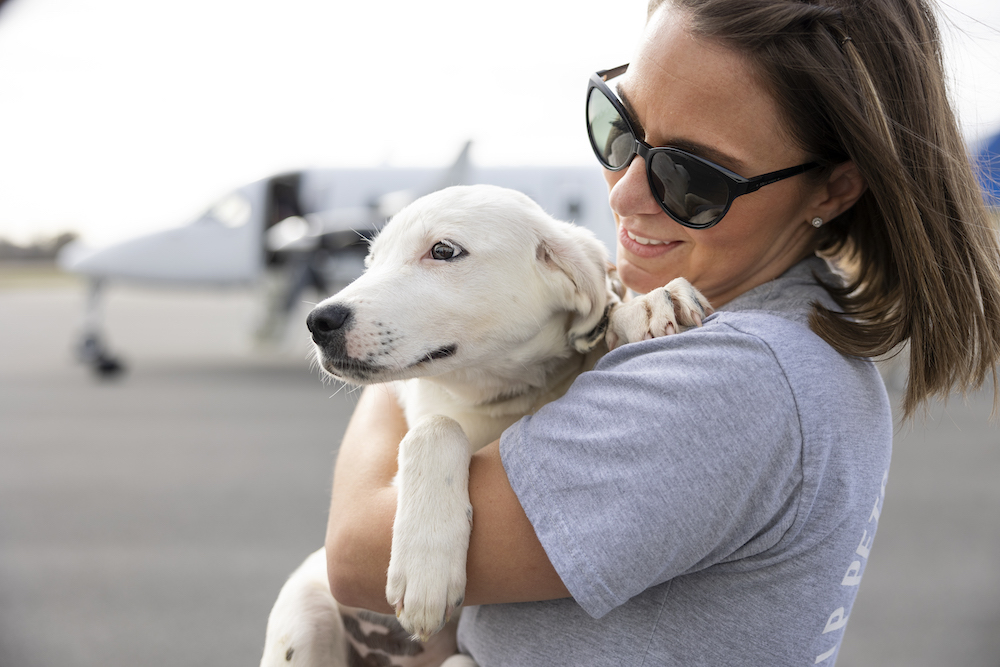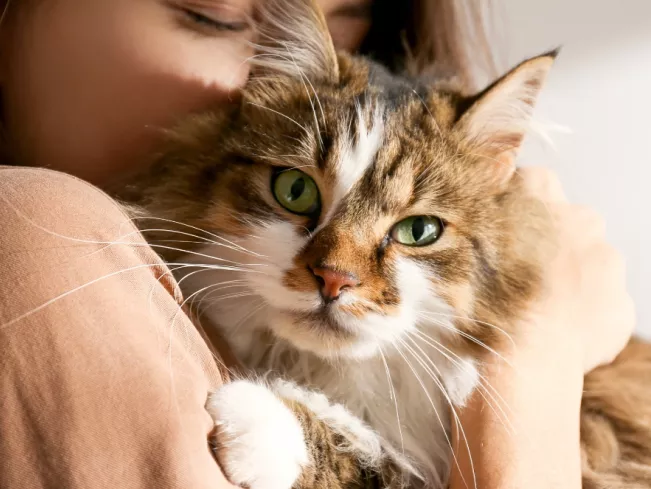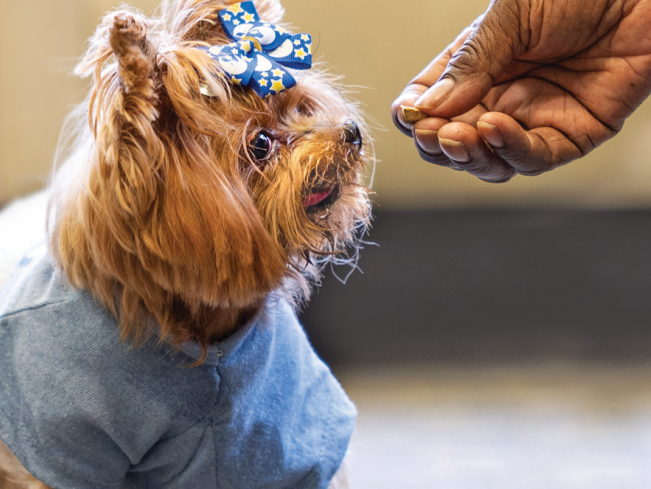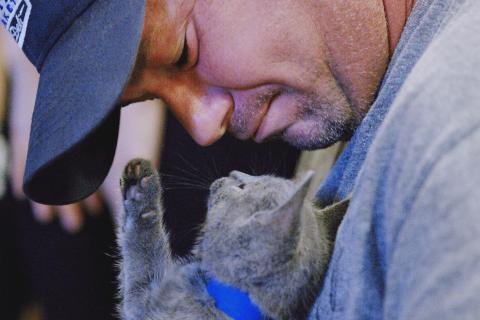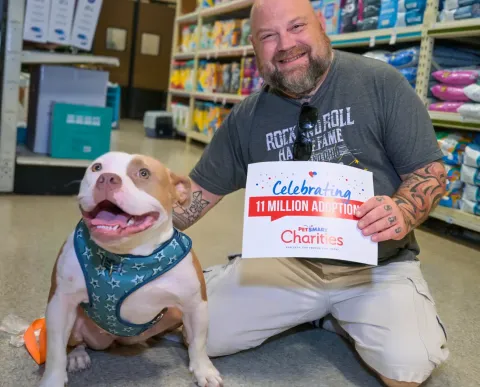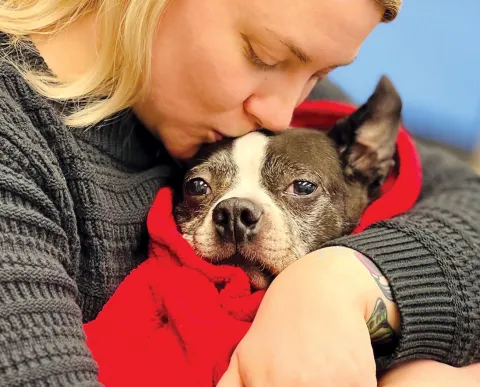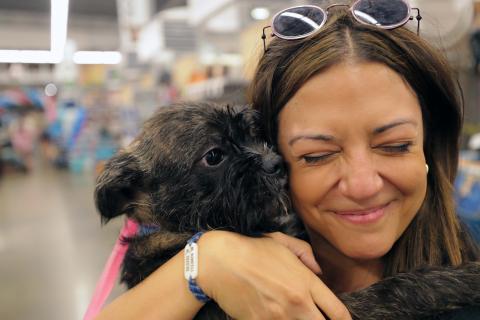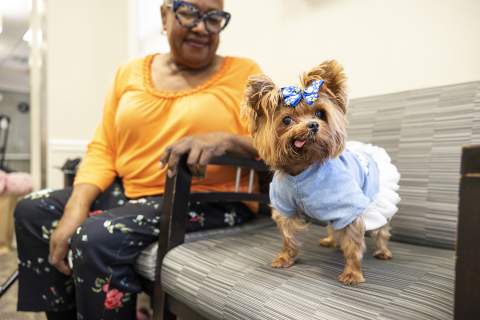
Overcrowding is a phenomenon that’s all too common to anyone who has been working in shelters and animal welfare across North America. National trends remind us of the tremendous progress that has been made over the past ten years as shelter intake nationally is at an all-time low and continues to decrease. This success is due in no small part to national spay/neuter initiatives, reimaging how we support families with keeping their pets and finding innovative ways to get animals in the shelter placed in permanent homes as quickly as possible.
 The reality is that for some communities, there are too many pets in shelters relative to the total human population, meaning there are too many pets for the local community to absorb on their own. That’s why transporting animals like “Poppy” to communities with capacity to get animals placed in homes quickly can become an important tool.
The reality is that for some communities, there are too many pets in shelters relative to the total human population, meaning there are too many pets for the local community to absorb on their own. That’s why transporting animals like “Poppy” to communities with capacity to get animals placed in homes quickly can become an important tool.
Recently, our team participated in a transport event that moved more than 60 adoptable pets from Companion Animal Alliance (CAA) in Louisiana to Lost Dog and Cat Rescue in Virginia. Because of these partnerships, pets who’ve endured long shelter stays are adopted in as little as 48 hours. After landing in Virginia, Poppy and many others were adopted during a PetSmart Charities National Adoption week event at the PetSmart store in Falls Church. Her family’s smiles say it all!
It Takes a Village
PetSmart Charities invests $1,000,000 in grant funding each year into transits like this one. And we know that these success stories are only possible through partnership and collaboration among organizations. In 2022, we granted Bissell Pet Foundation $150,000 in transport funds. They in turn supported the transport of travelers by funding Race for Life, a nonprofit dedicated to flying animals from one shelter to another. Wings of Rescue is another service that curries pets carefully to receiving shelters.
Countless volunteers from pilots to veterinarians to vehicle drivers to animal handlers to pet foster parents and countless more spend hours coordinating the logistics. The impact is swift not only for the pets, but the shelters like CAA who now have the capacity to serve additional animals in their communities.
Transport initiatives are just one solution, yet they provide an opportunity to innovate — and a strategic approach is needed.
Today, these transport events are still originated by grassroots efforts or cooperative relationships.
Transporting animals requires deep collaboration and shared goals among the source shelter and receiving destination. Given the cost and possible stress on the animals, transport is often a final resort. And when the option is a viable one, it should be executed with high standards, to mitigate the possible spread of infection and the impact on pets’ emotional wellness. Travel can be stressful for them, and it’s critical to consider their safety and comfort.
Paramount to successful transport is ensuring a positive outcome not only for the animals, but for the source shelter and receiving site. The most impactful models are those where receiving sites make long-term commitments to source shelters to support the decrease in animal overpopulation over time. Anything short of this commitment is merely putting a band-aid on the challenges.
If your shelter plans to participate in a transport exchange, consider the following for a smooth, successful transaction:
- Consult the AVMA Best Practices guidelines. This will help your team become familiar with any municipal restrictions and best practices around transporting, including the proper selection and preparation of animals and the best means of travel.
- Mutual Investments. The originating shelters, which are already overloaded, shouldn’t be expected to bear the entire cost of preparing the pets including ensuring they’re identified, medically evaluated, etc. Receiving groups often get vetted, ready-to-adopt pets who they can place into home for an adoption fee.
- Send a variety of animals. Refrain from transporting only small dogs or puppies/kittens, leaving less-adoptable pets at the source shelter (mothers of litters, large dogs, those who are heartworm positive or medically vulnerable, etc.) at the sending shelter.
Our team spent meaningful time lending hands and soaking up cuddles from so many sweet pets in need of homes and families. When we work together, we can move the needle to help more of them get the shelter they need to do what they do best – love people.
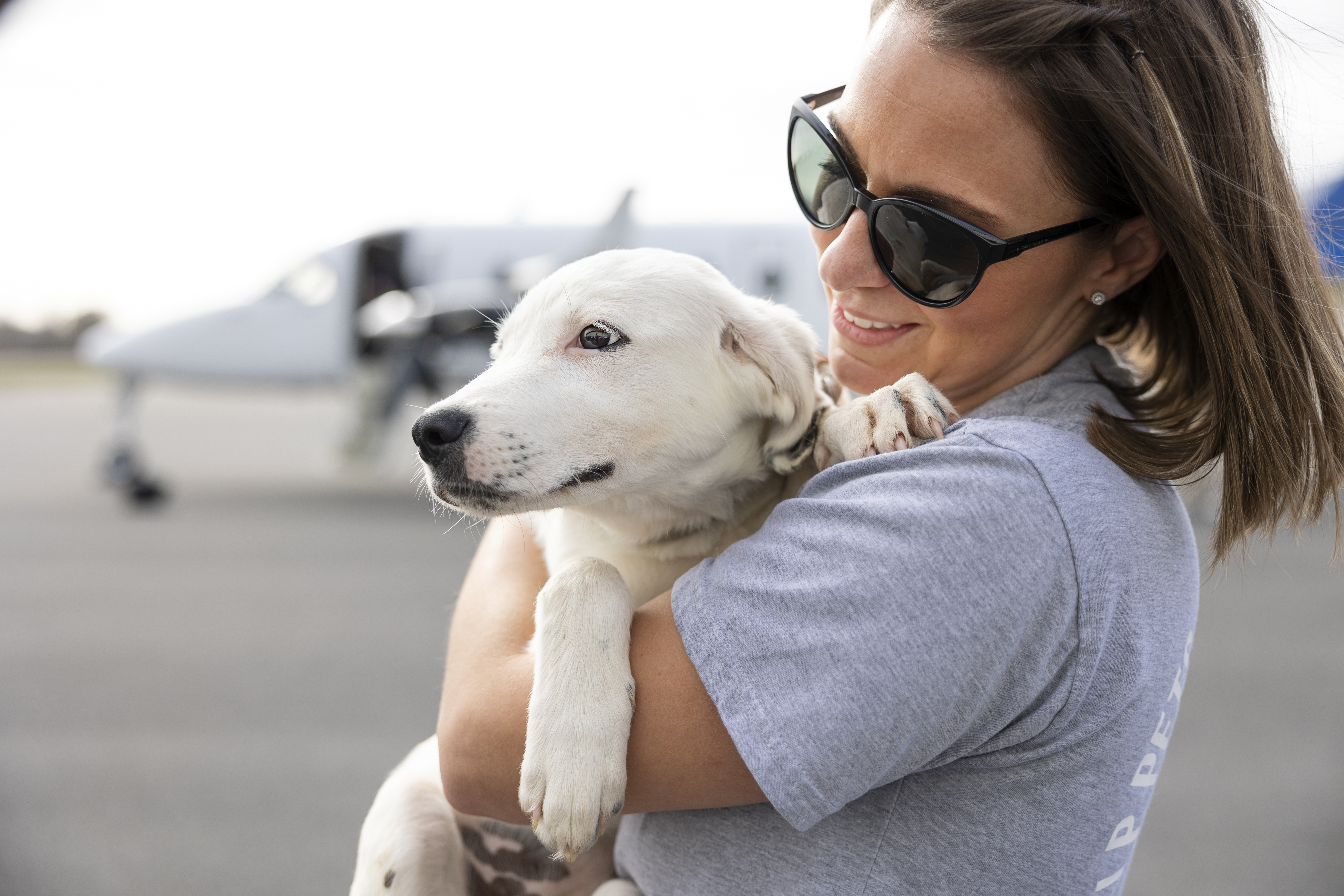 Heidi Marston oversees pet placement initiatives at PetSmart Charities.
Heidi Marston oversees pet placement initiatives at PetSmart Charities.
Connect with her on Linkedin.

